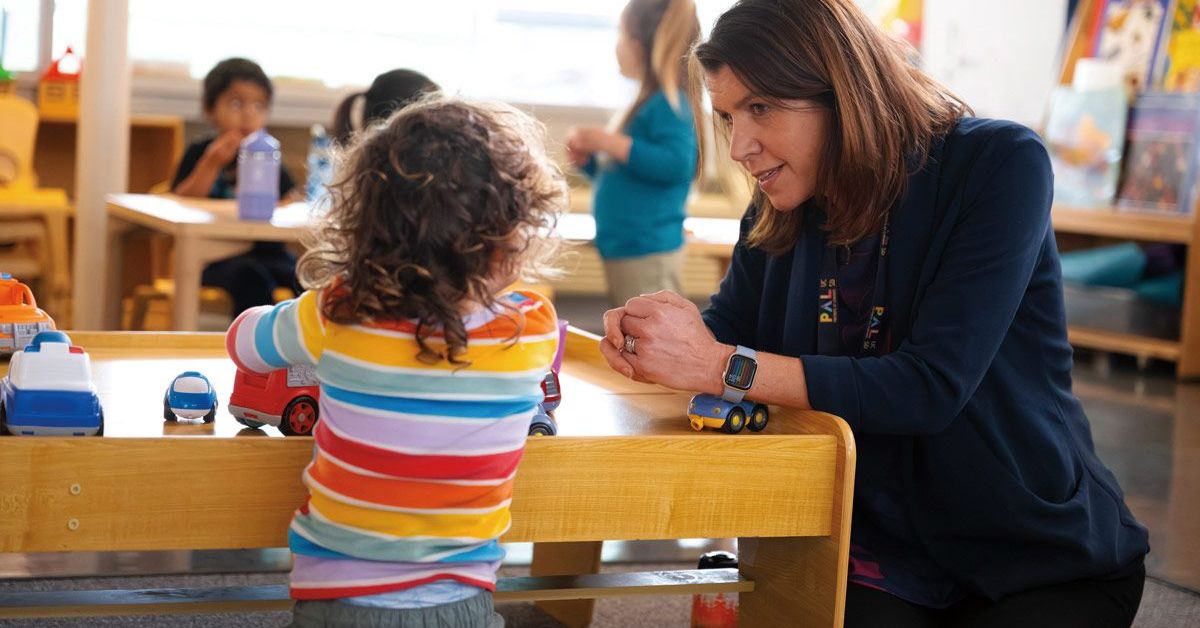Researchers Dig Into the Science of Education
A research-practice partnership between UC San Diego and Vista Unified School District is reshaping our understanding of early learning, paving the way for transformative changes in education.
Published Date
Story by:
Topics covered:
Share This:
Article Content
This article originally appeared in the spring 2024 issue of UC San Diego Magazine as “New Vistas in Learning.”
Kristina Jefferson’s sunlit transitional kindergarten classroom is bright, cheery and welcoming. Student drawings of their homes, families and pets hang on the walls alongside posters of the alphabet and days of the week. Brightly colored plastic bins are stacked with books in both English and Spanish.
While Jefferson’s class in the Vista Unified School District (VUSD) may look like a typical classroom for 4-year-olds preparing to enter kindergarten, it also serves as a real-world laboratory. Researchers from UC San Diego are gathering data from multiple perspectives — education, neuroscience and cognitive science — and collaborating with VUSD teachers and administrators on strategies to improve learning outcomes for all students.
VUSD serves a diverse student population of more than 18,000 in the cities of Vista and Oceanside in northern San Diego County
“We are at a point of crisis in our systems of education,” says Alison Wishard Guerra, associate professor in the Department of Education Studies at UC San Diego, who is part of the research team. “Teachers are leaving, and we have ongoing, continued achievement gaps that are primarily predicted by race, income, immigration status and language status.” She adds, “It may sound grandiose, but our goal and motivation to do this kind of work is to change the field of education and change the world by doing so.”
Matt Doyle, who previously was the assistant superintendent of innovation at VUSD, brought to the UC San Diego research team his district’s need for science-backed guidance to close the achievement gap stemming from low socioeconomic status and language barriers. About 65% of the district’s students come from households that are at or below the federal poverty level, and 17% are English learners.
“For us to move the needle on literacy and numeracy, we needed to really inspect our practice and pedagogies and use the research in our own school environments to help us learn about our blind spots,” says Doyle, now VUSD superintendent.
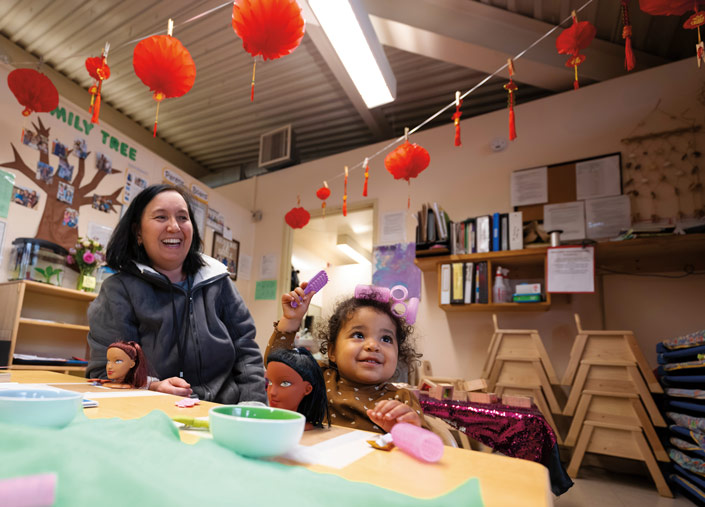
In the first three years of the UC San Diego-VUSD longitudinal studies, researchers followed children in six district classrooms, from transitional kindergarten to first grade. Their pioneering work received catalytic support from Richard Hertzberg and Carol Dean Hertzberg, Sandra Timmons ’81 and Richard Sandstrom ’72, PhD ’79 and the National Endowment for the Arts. Those early investigations have spawned multiple streams of research that promise to transform how children learn in the classroom, how teachers experience teaching and how parents interact with the school.
Equity for English learners
One initiative, dubbed STYLE or Strategies for Teaching Young Learners of English, was sparked by the concerns of VUSD administrators about the high proportion of the English learners who were being referred to special education programs. Of the 3,000 English learners in the district, 94% come from Spanish-speaking families.
Rafael Olavide is VUSD’s director of multilingual education and oversees language acquisition programs for the district’s English learners. In most cases, he said, the referrals were related to speech and language rather than learning issues. “I took note of the numbers and shared the information with my colleagues. That caught the attention of our partners at UC San Diego.”
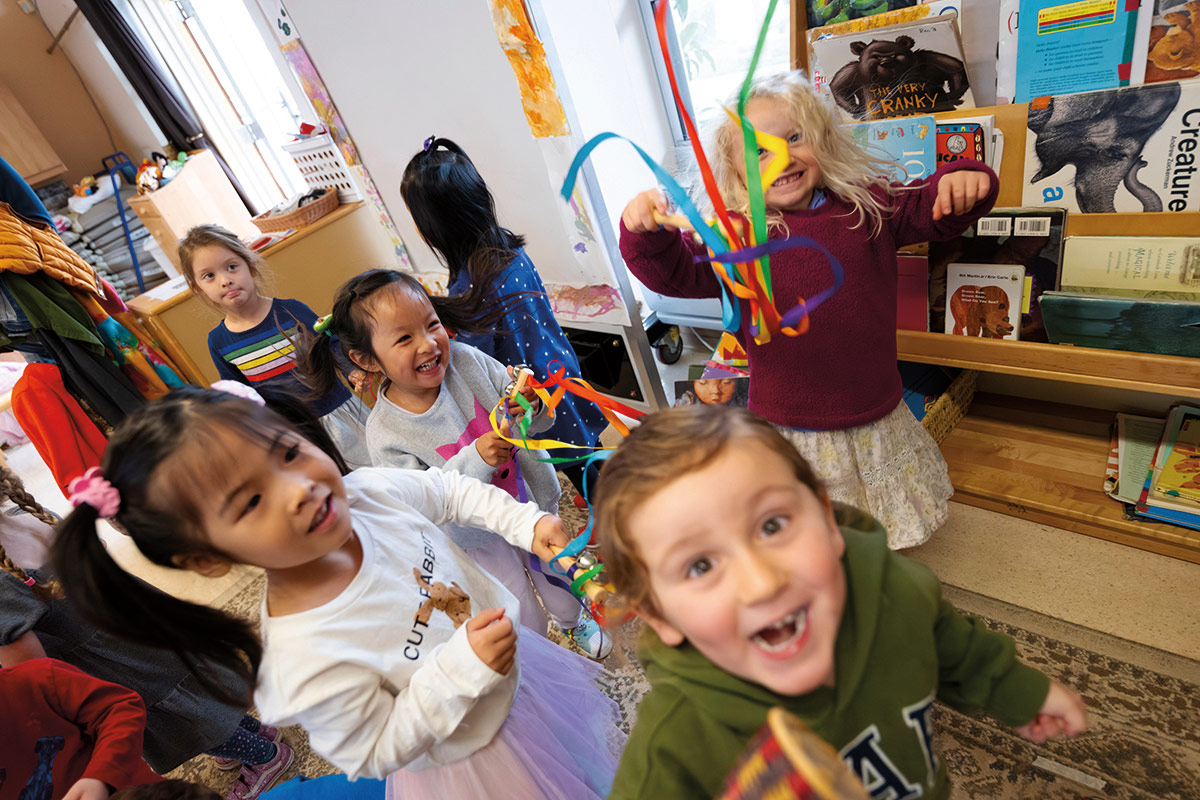
It also struck a personal chord with Shana Cohen, associate professor in the Department of Education Studies at UC San Diego and a member of the research team. As the child of immigrants from South America, she grew up in a Spanish-speaking household and spoke very little English when she entered school in Oakland, California. She recalls feeling left out in the classroom, alone on the playground and unable to strike up conversations with classmates. “It was definitely isolating.”
With the data they gathered from classroom observations, Cohen and Wishard Guerra began conversations with VUSD teachers on what they could do differently in their practice to better support their English learners. A top recommendation was to welcome the home language into the classroom.
“When you incorporate the home language in the classroom, when you elevate the priority and the value of the home language, children will have better cognitive outcomes in either language,” says Cohen. “When children feel they belong, they feel safer; they feel stronger relationships and connections to the teacher. It’s a primary requirement for kids to take cognitive risks, to try new things.”
“When children feel they belong, they feel safer; they feel stronger relationships and connections to the teacher. It’s a primary requirement for kids to take cognitive risks, to try new things.”
Wishard Guerra and Cohen also spoke with teachers about the benefits of strengthening bonds with families and making more room for dramatic play, which is known to benefit a child’s physical, emotional, intellectual and social development.
For Jefferson, the transitional kindergarten teacher at VUSD, the arrival of the research team at her school came at the right time. After 25 years in the profession, she was looking for new ideas and strategies to implement in her classroom. As a teacher who doesn’t speak Spanish, Jefferson wanted guidance on how to connect with the Spanish-speaking families of her students. “I was really hungry for feedback about my teaching.”
Today, the changes that she has made in her classroom are evident everywhere. There are Spanish labels on desks, computers and other classroom fixtures. The dramatic play center is a busy hub of creativity where students tell stories and take on the personas of chefs and letter carriers. Jefferson has introduced Family Read, a weekly Friday morning program where parents and other caregivers read to the class in Spanish or English. She assigns take-home projects that encourage family participation, uses the home language throughout the day, makes references to the students’ culture and traditions, and incorporates the details of their lives, such as pets and favorite foods, into her lessons. She often asks her students how to pronounce Spanish phrases.
Did you know? 17% of students in VUSD are English learners. 94% of the district's 3,000 English learners come from Spanish-speaking families.
“It shifted the hierarchy of power to where the children became the experts,” says Wishard Guerra. “It’s hard for us to document certain things like how their faces would light up when they heard a word that was part of their knowledge and to see that they are valued in the classroom, or the smiles on their faces when the teacher fumbled on a Spanish word.” The study period has seen remarkable improvements in the language skills of English learners. In their end-of-the-year evaluation, researchers found that English learners were having more decontextualized conversations, or talk extending beyond the immediate context, and had longer chats with teachers and peers.
The findings of the UC San Diego–VUSD partnership have the potential for application in classrooms nationwide. Future iterations of the initiative will continue to extend the boundaries of our understanding on how to support the five million English learners in the country and their teachers.
“If we change the way we engage with teachers, if we change the way we do science to really partner with the practitioner, we can have a big impact on the end experience of the teacher, the families and the child,” says Wishard Guerra.
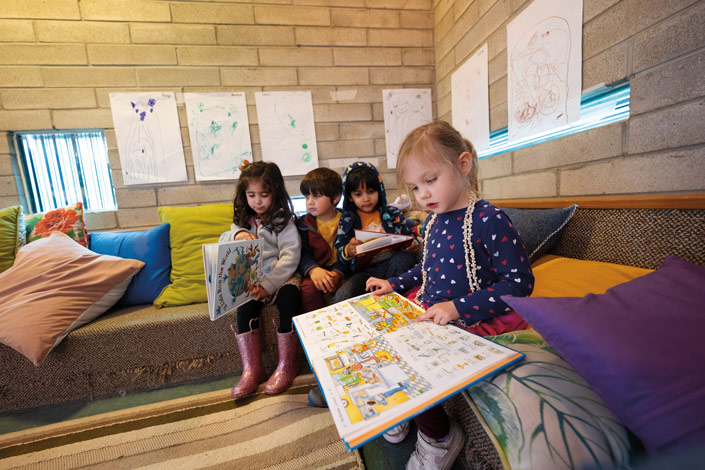
Bridging the achievement gap
Like Wishard Guerra and Cohen, Tim Brown has focused his research in VUSD schools on improving outcomes for students, but his work takes place from the lens of a neuroscientist. Brown is associate professor of neurosciences in UC San Diego School of Medicine and a developmental cognitive neuroscientist and pediatric neuropsychologist by training.
In his initial conversations with teachers, he heard the same need for guidance over and over again. “They said, ‘I’m asking them to read or do math’ and they’re struggling with that. But I know this kid is smart as a whip.”
The teachers’ concerns got Brown thinking how multiple areas of cognitive strength could be used to bolster learning in children who are not doing as well as their academically successful peers. He decided to focus on music and the quality of empathy as areas of alternative cognitive strengths.
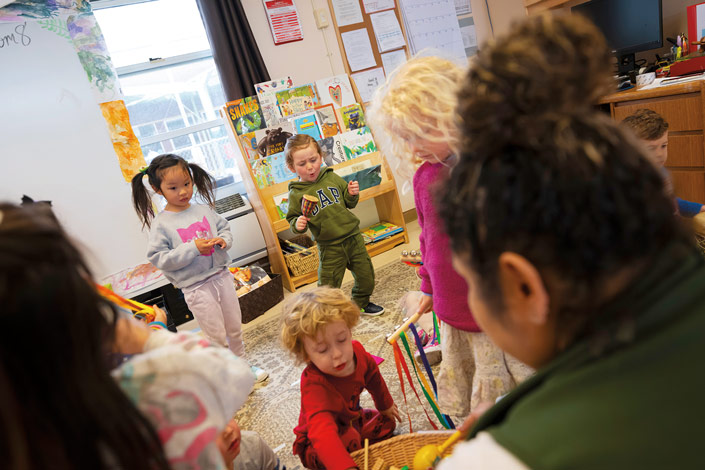
Brown and his research team have come up with some ingenious ways to observe and measure learning, development and brain activity in 4-year-olds. Their research toolkit includes old-fashioned puppets to engage children in role-play, a musical pitch test that Brown says students find “fun and silly” and an electroencephalogram to track brain activity.
The results of the tests have shown that children who were struggling academically scored as well as — in some cases better — than their academically successful classmates on both empathy and musical abilities.
“Our findings support multiple ways of being mentally skilled, even in early childhood,” says Brown. “By demonstrating the existence of these untapped talents, we now have specific areas in which cognitive strengths might be used to bolster learning in those already academically behind. This, in turn, provides an empirical scientific rationale for music in classrooms at the early childhood grades.”
One such initiative that is already in place at VUSD is Early Academic Readiness and Learning Intervention (EARLI), an eight-week singing program that has allowed researchers to study the development of musical skills in early childhood and its relationship to other developing areas of cognitive and academic skills. The program was developed by the research team in partnership with the San Diego Children’s Choir and is taught by veteran music educator Margie Orem.
“It’s a musical program that we hope engages children on multiple levels — motor levels, social levels and cognitive levels,” says Brown.
A model for collaboration
The UC San Diego–VUSD partnership is garnering widespread attention as a model for researcher–practitioner collaboration. Superintendent Doyle and the research team members have presented their work at conferences around the country.
“We have had many people reach out to us from across the nation and the world about the concept of a teacher–researcher collaborative,” says Doyle. “This is a unique situation we are in — we have researchers and teachers interacting in our classrooms.”
It’s a partnership that will continue to evolve in the coming years to meet the changing needs of educators and students.
“The purpose of our research is not just to gather data and leave,” says Cohen. “The purpose is to coach teachers through developing, supporting and changing their practice. It’s been successful because we have this willing partner [in VUSD] who is very invested in the work we do and in changing how they engage with their students.”
This article originally appeared in the spring 2024 issue of UC San Diego Magazine as “New Vistas in Learning.”
You May Also Like
Stay in the Know
Keep up with all the latest from UC San Diego. Subscribe to the newsletter today.
